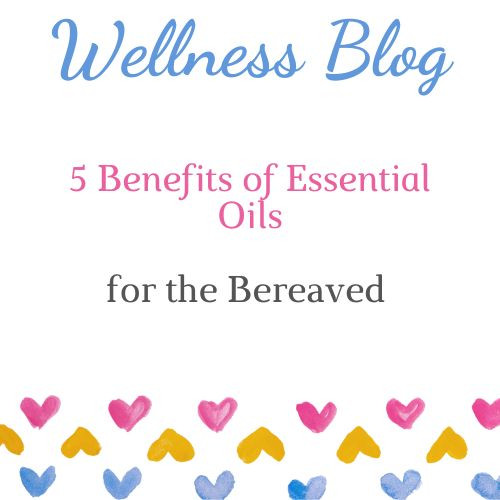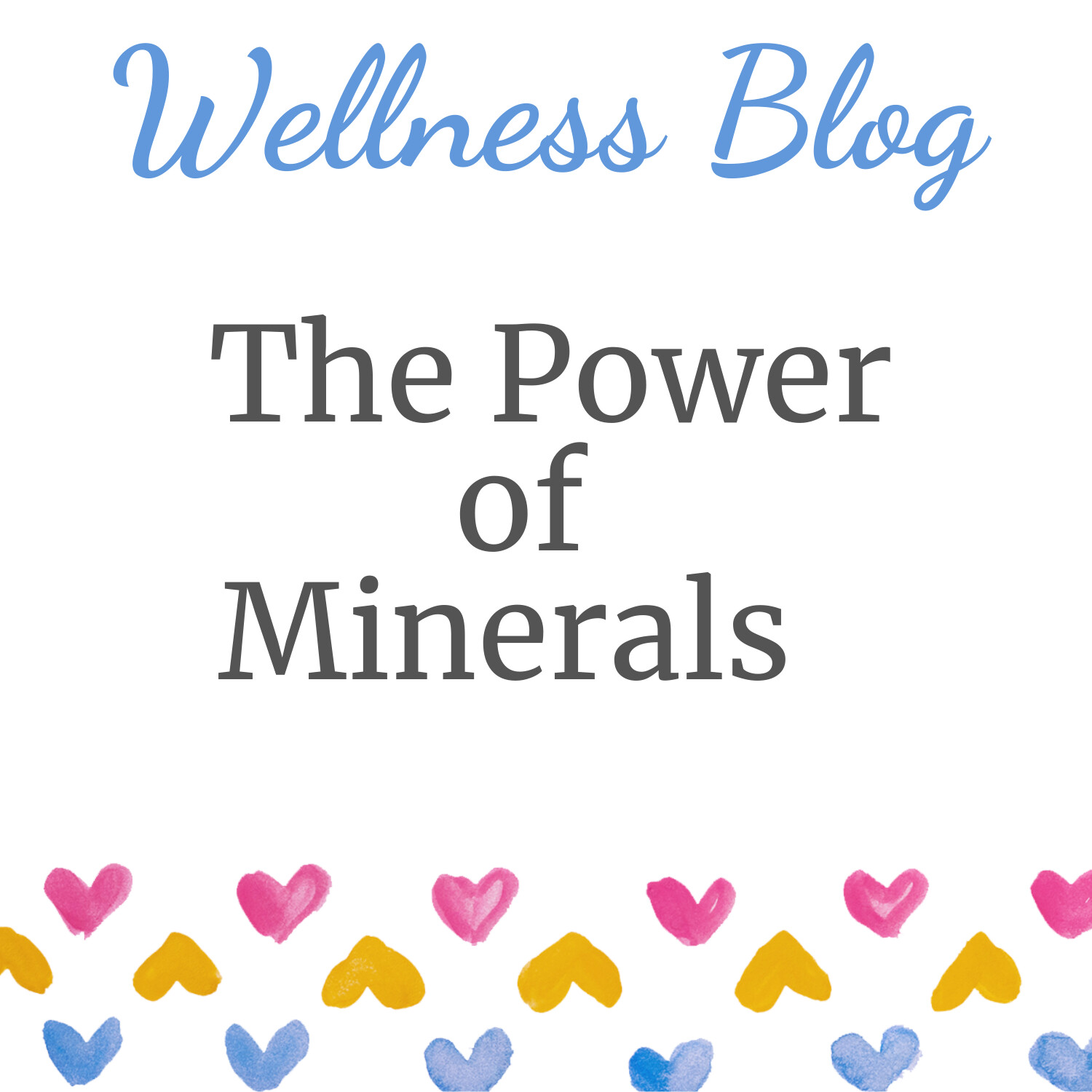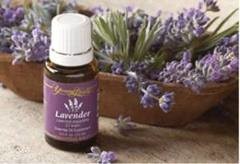
Essential Oils Your Skin Loves
For centuries many cultures have looked to essential oils to enhance their daily lives, perform religious rites, support wellness, and wear as perfumes. Not only are essential oils extremely versatile but many also contain naturally occurring constituents that are practically made for one particular usage: beautifying the skin.
Unlike skin care products that rely on harsh and synthetic ingredients, essential oils use their natural properties to brighten, smooth, and moisturize the appearance of skin in a way that leaves you feeling perfectly pampered.
Check out some skincare favourites to get your glow on!
1. Lavender
Lavender essential oil is the perfect place to start and a must-have in every home. This popular essential oil soothes and nourishes all skin types and is easy to incorporate into your skin care regimen every day.
- Add a drop to your hand, mix with facial moisturizer, and treat your skin to a mini facial massage.
- Make a basic homemade body scrub by combining coconut oil, sugar, and Lavender essential oil.
Start with 3–4 drops and gradually add more as desired.
Create a spa-like retreat by combining 1 cup Epsom salt and 4 drops Lavender and adding to a hot bath.
Frankincense essential oil has been sought after since ancient times for its many benefits, including its rejuvenating and beautifying properties. Great for all skin types—but especially beneficial for mature complexions—this luxurious oil helps moisturize and smooth the skin.
- Boost your skin’s radiance by massaging a drop of Frankincense into facial skin after cleansing, followed by applying your regular moisturizers.
Add a few drops to your face cream or body lotion and rub directly into skin.
Massage into the skin on hands and feet after a long day to restore skin’s texture.
Great for smoothing and nourishing all skin types, Cedarwood essential oil is a very versatile oil with a rich, woodsy aroma. Because this oil also benefits hair, it’s a great choice for nourishing skin on the scalp.
- Smooth skin on the face or body by adding a few drops Cedarwood to your favourite lotions.
- Add 3–4 drops to a bowl of hot water. Cover your head and the bowl with a towel and breathe deeply and slowly for several minutes to open pores and enjoy the calming aroma. Follow up with a facial massage that includes 1 drop of Cedarwood oil. Mix 5–6 drops of Cedarwood with a small amount of coconut or Argan oil. Massage into your scalp 30–60 minutes before showering, then wash and rinse hair as normal.
I would recommend these are the first 3 essential oils to add to your collection if you intend to start making your own chemical free cosmetics.
If you would like to buy some YL Frankincense essential oil, you can do so here
If you would like to buy some YL Cedarwood essential oil, you can do so here
Reference: Adapted from a YL blog
 Suzie Webb
Suzie Webb Clinical Aromatherapist & Nutrition Consultant
Simply put, hydrosol is the aromatic water that remains after steam-distilling botanical material. During essential oil distillation, pressurized steam passes through the plant product extracting the essential oils contained within the plant material. The steam and oil are condensed, the essential oil is decanted from the top of the oil/water mixture, and the water-based product left is hydrosol.
Hydrosol contains trace amounts of essential oils, as well as other hydrophilic (water-soluble) compounds native to the plant material. Generally speaking, the hydrosol contains the water-soluble chemicals from the plant, while the essential oil contains the hydrophobic, or non-water-soluble, chemicals. This helps explain the subtle differences in aroma and therapeutic quality between the essential oil and hydrosol derived from the same plant. Hydrosols still have the beautiful scent of the plant but tend to be gentler in nature.
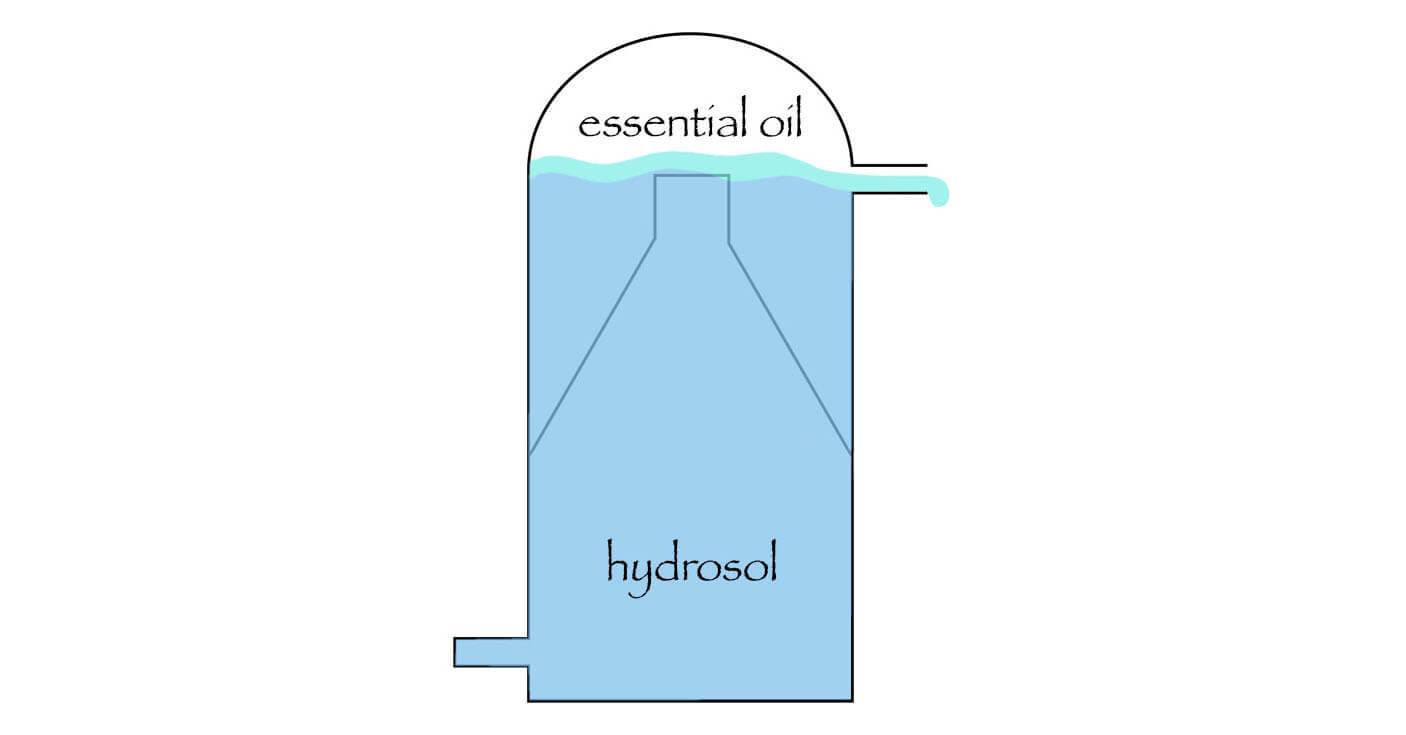
In her book Hydrosols: The Next Aromatherapy, Suzanne Catty states the following, “Hydrosols contain all of the plant in every drop… Here we have the water-soluble components, the essential-oil molecules, the very fluid that was flowing through the plant cells when the plant was collected. It’s all there in a matrix of water that is so much more than water…”.
It’s important to note that hydrosols are not simply essential oils blended into the water to form a mixture, rather they are the result of essential oil distillation. The best hydrosols are distilled from fresh, vibrant plant material and aren’t a byproduct of an essential oil distillation – they are the focus of the distillation!
Using Hydrosols
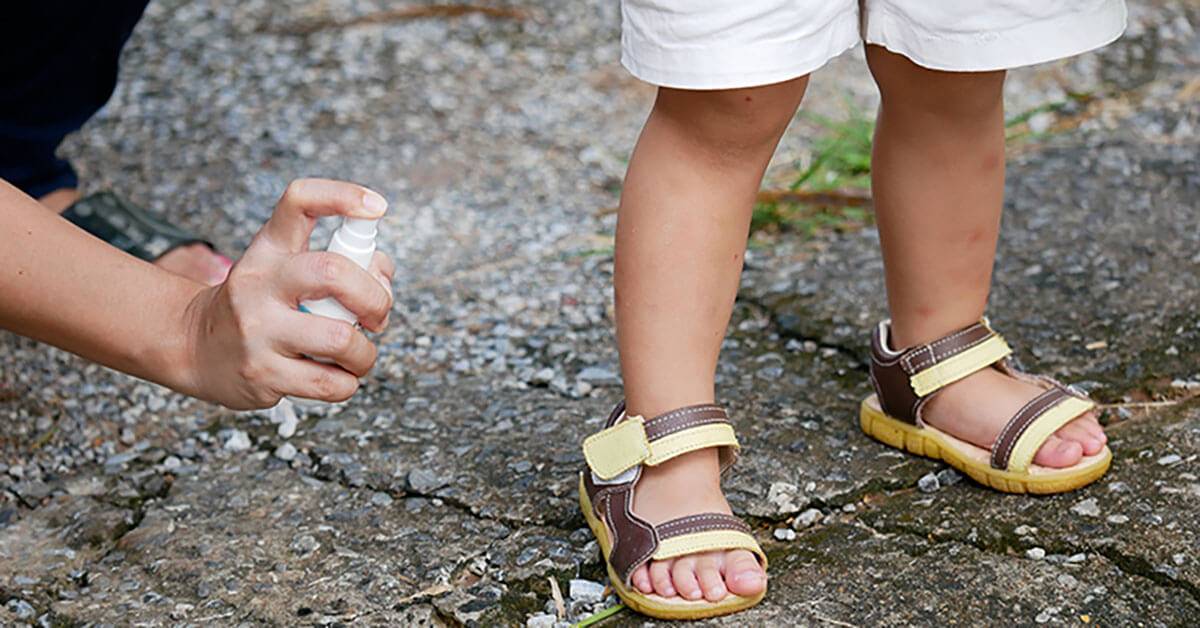
One of the great benefits of hydrosols is the variety of ways they can be incorporated into your daily life. The uses of hydrosols are wide-ranging, and because of their gentle nature, they can be used immediately without further dilution. They are also safe for use with children and have very few safety concerns. Below are some of our favorite ways to use these beautiful distillate waters:
- Acne Treatment
- Anti-bacterial Spray
- Anti-inflammatory agent
- Bathroom Freshener
- Beverage Flavoring
- Burn Relief
- Car Freshener
- Cleaning Product Base or Ingredient
- Facial Treatment
- General Health Tonic
- Immune System Support
- Insect Repellent
- Linen & Garment Spray
- Lymph System Support
- Natural Deodorant
- Perfume Base
- Room Freshener
- Situational Anxiety Relief
- Situational Depression Relief
- Skin Moisturizer
- Skin Toner
- Sunburn Relief
- Wound Care
Hydrosols are amazingly versatile in that they can be used by themselves or can be incorporated as an ingredient in a more complex aromatherapy blend.
Hydrosol Safety and Storage
There are some things to consider when working with hydrosols. Hydrosols have a 1-2 year shelf life and should be used within this period to avoid bacterial growth and keep the therapeutic vibrancy this product intact. Hydrosols are perfect candidates for the refrigerator! If you do notice any kind of bloom-forming in your hydrosol, you would want to replace this product with a fresh batch right away. Hydrosols do best in a sterile environment and anytime you are putting hydrosol into a bottle, and you want it or a blend to last for more than 1 week, you would want to sterilize the container with grain alcohol before filling it with hydrosol.
Hydrosols are gentle and perfect for young kids and children in general. A little German chamomile on a bruise or scrape is perfect for active kids to help them heal even faster from injury. A teaspoon of elderflower hydrosol in a tall glass of water can really help boost the immune system.
Hydrosol Recipe
Green Clay Mask
Ingredients:
- 1 drop of Rosemary ct Verbenone Oil Rosmarinus officinalis ct verbenone
- 1 drop of Cypress Oil Cupressus sempervirens
- 2 tsp of French Green Clay
- Enough to blend mask Frankincense Hydrosol Boswellia carterii
Directions:
- Combine all ingredients in a glass bowl.
- Once mixed, apply liberally to face and neck.
- Leave on for 10-15 minutes

I've had my iTovi scanner for four years now and absolutely love it!
What exactly is it?
First of all the disclaimer!
The iTovi scanner is not designed to diagnose, monitor or treat any illnesses
So what is it? The scanner combines galvanic skin responses and Bluetooth technologies to generate a personalised evaluation/report on essential oils or supplements your body would benefit from at the time of the scan. Thousands of health-minded individuals use the iTovi Scanner once or twice a week to provide themselves with individualised information and guidance when choosing nutritional products, essential oils and supplements. The iTovi takes away the guessing what oils you need, as it tells you! clever eh!
How does it work?
The iTovi is a tiny handheld device that you hold in your palm with your fingers over the oval metal plate and your thumb on the top plate, and is activated through an app on my phone to scan your body. The whole thing takes about three minutes from opening the app, turning on the iTovi to seeing the results of your scan, first on the mobile device and then from an automatic email sent to you with report in to read at your leisure. The technology is similar to that used by Fit Bits and iWatches.
What do you want the report to tell you?
If you enter 'settings' you can ask for the number of products you want shown on the report. The choice is either 3, 6, 7 or 10. I usually set it for 3, as I don't want to be overwhelmed with options - and don't want my client to be overwhelmed either. The scanner shows the identified products in order of importance. Before starting the scan you can also choose what products you want to scan - the choices are Essential Oils only, singles and blends, (this is the one I always choose), Weight Management products, or supplements which include all the health supplements available in Europe and of course Ningxia Red - our powerhouse energy shot. Interestingly, I sometimes scan myself and ask for 'other products' and often B Vitamins or calcium will come up - no essential oils at all!
What I love about the report is that it identifies the products chosen for you under 3 categories. Environmental, Physical and Emotional. Sometimes the first recommended oil covers all three of these categories, and sometimes just one or two, but it is always interesting to see the categories that come up and the oils selected.
If you live in Jersey, and want a free scan - just message me and we can meet for a cuppa and I'll scan you. Alternatively, if you want your own scanner - then you can get your own, and scan other people.
Order yours now! There are a couple of options to get your iTovi - clink the link for the options.
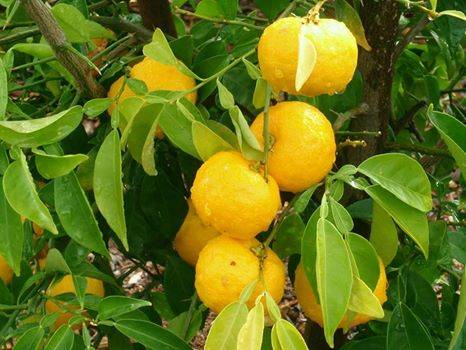
Did you know that some citrus essential oils are not phototoxic? If you’ve been avoiding all citrus oils out of concerns over phototoxicity, you can still use a few citrus oils without worrying about potential phototoxic skin reactions.
Whilst marking one of my students case studies the other day, I observed that very few citrus oils were being used in her blends. On asking her why she told me of her fear of using citrus oils in case she caused a phototoxic reaction to one of her clients. Maybe I was a bit too enthusiastic when teaching about the safety of essential oils!
I was pleased this came up as it gave me an opportunity to clear up the safety rules around phototoxic oils for this particular student, and for everyone else using essential oils.
Can you safely use phototoxic essential oils in topical blends - blends that are put directly on the skin?
Yes, absolutely!!
Before I explain how, let me explain what it means for an essential oil to be phototoxic.
Phototoxic essential oils can cause skin reactions in sunlight and UV light (such as tanning beds). These reactions are no fun, and some people choose to avoid using citrus essential oils in topical blends altogether just to be on the safe side.
But there’s good news! You can “be on the safe side” and still use citrus essential oils!
First of all, there are some citrus essential oils that don’t cause phototoxic reactions at all. These are:
- Green Mandarin (Citrus reticulata)
- Distilled Lime (Citrus aurantifolia)
- Sweet Orange (Citrus sinensis)
- Yuzu (Citrus junos)
- Tangerine (Citrus × tangerina)
Did you notice I pointed out that distilled Lime is not phototoxic? That’s because Lime is unique—it can be cold-pressed or distilled, and the production method determines whether it’s phototoxic. Cold-pressed Lime is phototoxic, but distilled Lime is not. Other citruses (like Lemon) can be distilled as well, but it’s not a common practice.
Now I've pointed out the citrus essential oils that aren’t phototoxic. What about the ones that are? You can still use those in topical blends, as long as you dilute them in carriers appropriately.
Here are the guidelines for each phototoxic oil and how many drops you can safely use in 1 oz (30 ml) of carrier.
- Cold-Pressed/Expressed Bergamot – 2.4 drops per oz (Just use 2 drops to keep it simple)
- Cold-Pressed/Expressed Lemon – 12 drops per oz
- Cold-Pressed/Expressed Lime – 4.2 drops per oz (Just use 4 drops)
- Cold-Pressed/Expressed Grapefruit – 24 drops per oz
As long as you stay within these dilution guidelines, feel free to use these citrus oils in your topical blends. Don’t let the word “phototoxic” make you shy away.
Citrus oils want to inspire happy feelings! They’re wonderful in body oils and lotions, digestion creams, and pain relief blends. Just be mindful of how many drops per ounce you’re using, and you’ll do just fine.
References:
Robert Tisserand and Rodney Young’s book - Essential Oil Safety: A Guide for Health Care Professionals, 2nd Edition
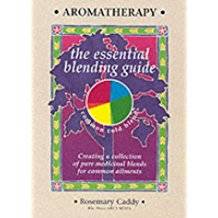
Many people I know are suffering with a 'summer' cold - so here is a great recipe to support you and which may alleviate it quicker. Whenever the word BLEND is used in this article it means a BLEND of essential oils that has not been diluted with a carrier oil. The Treatment Oil refers to a carrier oil with added drops of the BLEND.
The essential oils used in the Common Cold blend are:
Cedarwood Atlas (Cedrus atlantica)
Eucalyptus Blue Gum (Eucalyptus globulus) &
Peppermint (Mentha piperita).
Cedarwood Atlas – clears mucous and is recommended for bronchitis. It belongs to the Pinaceae family which is generally known for aiding respiratory conditions and is highly antiseptic.
Eucalyptus Blue Gum – clears nasal passages, reduces temperature and is excellent for all colds.
Peppermint – lowers fever, is a good expectorant and generally helps mental fatigue.
The Common Cold Blend:
20 drops Cedarwood Atlas + 10 drops Eucalyptus Blue Gum + 10 drops Peppermint
Make up your Common Cold blend with a total of 40 drops of the above oils (20+10+10) and store in a small dark glass bottle fitted with a dropper. (Label appropriately with date and blend details – note added by Suzanne!)
Massage – Add 12 drops of the Common Cold blend to 30 ml of Sweet Almond Oil to make up a supply of Common Cold Treatment Oil. Alternatively add 12 drops of the blend to 30 ml of body cream or lotion.
Massage chest, neck and upper back areas morning and night. Concentrate thumb massage around the vertebrae as this stimulates the action of the oils. A facial massage with this Treatment Oil helps sinusitis sufferers. Rub a small amount of Treatment Oil under the nostrils when going to bed.
Room Spray – Add 12 drops of the blend to 1 litre of water. Spray freely in any room.
Tissues – Place 2 to 4 drops of the blend onto a paper tissue. Wrap the tissue in foil and pop it in your pocket so that you can inhale the vapours from the tissue at regular intervals during the day. To ease congestion at night place such a tissue on the soles of your feet. The vapour from the oils passes around the body as you sleep.
Vapouriser/Diffuser – Place 4 to 6 drops of the Common Cold blend in the vapouriser/diffuser. It helps to keep the vapouriser going in any room where you are spending any length of time. This also guards against others contracting your condition.
Baths – Place 8 drops of the Common Cold blend into a warm bath. Relax and inhale the vapours. This is particularly helpful before going to bed. (mix with a little milk first for better distribution in the water – note added by Suzanne!).
Diet – Two or three garlic tablets each day are recommended. Cut down on all dairy food as this encourages the production of mucous in the system. Take regular doses of vitamin C tablets or drinks. Follow a light healthy diet of fruit and vegetables.
The Chemistry:
Chemical constituents to be found in the Common Cold Blend include:
Ketones – atlantone, pinocarvone, menthone
Alcohols – atlantol, cedrol, globulol, pinocarveol, menthol
Oxides – 1,8-cineole
Sesquiterpenes – cadinene, aromadendrene, germacrene, caryophyllene
The blend is well balanced.
The ketones and oxides help with the congestion.
The alcohols make it highly antiseptic.
The sesquiterpenes are calming.
Reference: The Essential Blending Guide by Rosemary Caddy – slightly amended by Suzanne Le Quesne
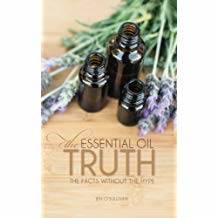
Has Anyone Ever Died from Essential Oils?
Over a 2 year period from 2010-2012 there were zero deaths from essential oil use as reported by the NPDS (National Poison Data Systems) as put out by the annual report from the American Association of Poison Control Centres. On the flip side, during 2010 alone there was reported to the CDC (Centre for Disease Control), 40,393 drug-induced deaths in just the United States. The CDC also states that 44 people in the United States die every day from overdosing on prescription painkillers. Every day!
JAMA (The Journal of the American Medical Association) did a study from 1993-1998 and found 212,000 deaths in the United States from physician administered procedures as well as properly administered prescription drugs. Essential oils in a negative light are nowhere to be found on the internet database of the CDC, but interestingly they are called out as potentially toxic by the FDA. Money plays a large role in our lives and has a lot of power.
The actual deaths from essential oil are incredibly small and, to date, only a scant few have been reported over the last one hundred years. A couple of children who somehow were able to ingest 1-2 ounces of an essential oil (Eucalyptus was sited in one report and Wintergreen in another). Two adult deaths were reported from women trying to abort their unborn babies. They drank an entire bottle of Wormwood, successfully killing their unborn baby as well as themselves.
As you can see, deaths from essential oil use are extremely rare and the ones that have been reported are from a major lack of common sense. As adults we need to keep essential oils out of reach from small children and we need to educate our older children of their proper use. While essential oils are powerful, when used properly and from a reputable company that only provides the purest oils, they will only enhance your health rather than hinder it.
Reference: The Essential Oil Truth - The Facts without the Hype - by Jen O'Sullivan
Ravensara and Ravintsara - the differences
I am going to attempt to explain the differences between these two oils, as there is so much confusion over them. Ravintsara essential oil should never be confused with ravensara essential oil and substituting one oil for the other is never an option, as their therapeutic properties are very different from each other.
Let's start with a little botany! Plant naming and the use of botanical Latin can be daunting to beginner and experienced aromatherapists alike. Nonetheless, the science of classifying living things (taxonomy) is essential to our understanding of the natural world. Without the botanical Latin name, how can you be entirely sure of which essential oils you are buying and more importantly, using in your practice.
I'll state again, as I do very often! that it is of paramount importance for us to know the botanical names of the oils we are using in our practices. Do not consider buying a essential oil without researching first exactly which one you want and why you want it. You need to keep in mind all the different chemo types too. Do not go shopping for essential oils until you have done your homework.
The first difference is the botanical name:
Ravensara (Ravensara aromatica) is distilled from the leaves and branches of a tree by the same name - indigenous to Madagascar.
Ravintsara (Cinnamomum camphora) is distilled from the leaves of the camphor tree, which originated in Japan and China.
Ravintsara is not therefore indigenous to Madagascar but was introduced from China in the early 1800s. It's a species* of Cinnamonum camphora which lost its ability to produce any camphor under the Madagascan climate.
For many years, oils from both Ravensara aromatica and Cinnamomum camphora were distilled and traded on the market as Ravensara with a reference to either botanical name. It is only a few years ago that research into the chemical makeup of these oils has finally given them their distinctive individual botanical identity.
So whilst Cinnamonum camphora is now grown in Madagascar, it is very different to the Cinnamonum camphora grown in China - because of the different climate and therefore producing a chemo type.
The next difference is the main chemical compounds of the oils:
Ravensara is generally high in monoterpenes, such as limonene and sabinene, giving this oil antibacterial and immune supportive properties. Its aroma is fresh, earthy and green.
Ravintsara on the other hand, is known for being very high in 1,8 cineol, making it supportive for respiratory issues and as a decongestant. Its aroma is vibrant, clean and very similar to Eucalyptus.
So! If you see a bottle of essential oil labeled Ravensara, and it advertises a high chemical composition of 1,8 cineol (say 50%-60%) then this essential oil will most certainly be Ravintsara, not Ravensara (as Ravensara is high in monoterpenes, not 1,8 cineol).
Now I'm going to make it more confusing!
Ho Wood Essential Oil, Cinnamomum camphora ct linalool, is steam distilled from the bark and wood (and sometimes the leaves are simultaneously distilled) from the same tree that brings us Ravintsara. Ravintsara Essential Oil is distilled from the leaves of Cinnamomum camphora and is sometimes known as Ho Leaf Oil.
Surely the easiest thing to do, to stop all this confusion, is that oils from the Cinnamomum camphora tree we always call Ho Leaf, or Ho Bark essential oil and the oil from Ravensara aromatica tree we call Ravensara - forget the name Ravintsara totally! to save confusion - when you see Ravintsara, think Ho Leaf!
So!!! When you are buying Ho Leaf (which will no doubt have Ravintsara on the label!), the label should read:
Ravintsara - 100% Pure Essential Oil. Cinnamomum camphora (c.t. 1,8 cineol) **
Calling Ho Leaf oil 'Ravintsara' is just confusing for everyone.
*Species - species are groups of interbreeding populations, which are reproductively isolated from other species.
** 1,8 cineol is also known as also known as 'eucalyptol'

Essential Oils for Travelling
I love travelling, and do a lot of it! but sometimes have the problem of being unable to take as many essential oils with me as I would like! With hold luggage there is no problem to the amount I can take, but I frequently travel with hand luggage only, and once almost had some of my oils taken away as I was over the allowed limit for liquids. To resolve my problem, I’ve started making up some inhalers. I bought the ones in the picture from Purple Flame Aromatherapy (one of the first Aromatherapy Courses I did back in the 1980s!), and they were about £10 for 10 including tax and postage via Amazon.co.uk.
The inhalers are small enough to pass through security with no problem – as the eco-friendly absorbent cotton wick absorbs the oils so they are no longer classified as a liquid. They take about 10 minutes to make, and can last up to 3 months with daily use!
The first inhaler recipe I made, I called ‘Stress Buster’. The blend is for respiratory support – I use 5 drops of Frankincense (Boswellia caterii), 6 drops of Eucalyptus (Eucalyptus globulus), and 4 drops of Orange (Citrus sinensis). I mix all the oils together in a small dish, then soak the cotton wick in it and insert into the inhaler – easy! and one I never travel without.
The second inhaler I made I called my ‘Immune Support’ – again I used 15 drops of essential oil and I either alternate with my Stress Buster or use it if I’m sitting next to someone coughing and sneezing!!! In my Immune Support inhaler I put 6 drops of Lemon (Citrus limon) 2 drops of the YL Thieves blend, and 7 drops of Oregano. This is quite a potent blend but one I love and use whilst sitting on a crowded plane or generally anywhere that is busy with people – airports, train stations and shopping malls!!Another product I make for travelling is a room spray. Using just 1oz of water it makes my hotel room smell more like home! but cleanses the room at the same time! Into 1 oz of water (30 mls) I add 3 drops of Cedarwood (Juniperus virginiana) and 3 drops of Mandarin (Citrus reticulata)
Added to these 2 inhalers and the room spray I always travel with the YL Thieves hand cleanser and spray – the spray I use to spray on loo door handles and flush handles! Better to be safe than sorry! Safe and Healthy Travels!
Re-posted from my website Suzanne Le Quesne as I am often asked about oils for travelling.
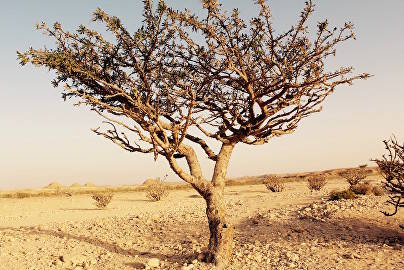
I recently attended the International Federation of Aromatherapists AGM and in the afternoon we had a speaker talking to us about Frankincense resin.
I have some Frankincense resin, that I usually pass around during my Healing Oils of the Bible workshops but I rarely burn it, as I always diffuse my Frankincense essential oil, so I was interested to smell the aroma of the resin and to hear about the different grades of resin available.
We were shown about 14 different resins! Before the resin is packed they are all carefully separated by colour size and smell. This process is called ‘Grading’ and can take from a couple of weeks up to a month. Grading is a unique technique advanced by The Frankincense Store in Notting Hill, London, to bring out the natural qualities and aroma of the resins. It is only the Omani Boswellia Sacra Frankincense that they spend time grading on. Grading can be a very complex task, as every harvest produces different qualities.
Omani Frankincense has been classified into four types according to region of growth.
The finest quality is Hojari, which is from the trees that grow in the Eastern part of Dhofar.
The second grade is known as Najdi, which grows in the Najd area, north of the Dhofar Mountains.
The third class is called Shazri, and its trees grow in the western area and
the fourth quality is called Shabi, whose trees grow in the coastal plain where rainfall is adequate.
On each visit to Oman choosing the sacks personally by Shehbaz Khan is very important to The Frankincense Store, so they know what to expect from each harvest and from what region they are from. The Omanis have their own grading system which works for them. However The Frankincense Stores' complex grading technique has advanced so much that some of their grades are not even available to purchase in Oman.
After choosing the sacks they are shipped to The Frankincense Store's warehouse in the UK and on arrival each sack is graded 1 by 1. All the grading is carried out by store founder Shehbaz Khan, who takes 8 hours a day to grade a 40 kg sack. Firstly all the powder is removed by sieving it from the resins. Simultaneously all the smaller granules are too removed out. Then all the tree bark and any other bits such as stones and twigs.
Followed by the deep concentration of separating every piece by shape colour size begins in natural daylight. The light must be right for them to bring out the best in quality. Too bright and all the colours look the same, too dull and you cannot see all the colours. They look out for our rare Green Hojari Frankincense, which has amazing medicinal properties. All the different grades are sorted into baskets which are then packed into their hessian and retails packs. Sometimes the baskets have to be re-graded to ensure that our resins stay constant in quality. However as all their resins are 100% natural and organic and there will always be slight differences in quality and appearance with every new batch of Frankincense.
The entire process from buying , grading , packing and selling is carried out manually and no machines are used.
Traditionally Frankincense has been burned on charcoal for its aromatic smoke. It also had been since ancient times been used as medicine by taking internally. There are only three types of Frankincense from their range you can digest, and they are the Yellow, Green and Royal grades. All three can be chewed like a sweet or made in to a drink.
How to burn Frankincense resin. Firstly make sure you have a heat proof incense burner. Teracotta is the best material as it can withstand the heat. Use a lighter to heat the charcoal held with a pair of tongs. Place the charcoal onto the incense burner. Wait for the charcoal to fully heat which takes about 30 seconds. Choose your favourite Frankincense resin and place a small tear drop on top of the charcoal. Sit back and enjoy the aromatic smoke.
There are 3 ways to take Frankincense internally. the first way is to just simply chew on a raw piece of Frankincense. No need to wash it , just simply pop it into the mouth and start chewing. The other two are as a drink. To make Frankincense in order to drink it, can only be made with yellow, green and royal grades as these are the three therapeutic grades and have many healing properties.
Frankincense Tea - Pour 3-4 mugs of water into a saucepan. Heat the water and bring to the boil. Drop one piece of Frankincense resin preferably the size of a cashew nut into the pan. Stir continuously until resins dissolves into the water. The resin is very sticky and will leave residue on the side of the pan which is difficult to remove. Try to use all of the resin to dissolve in the pan. Once dissolved pour into a mug. Any small bits of resin are total fine to consume in the drink. We advise you use a pan sole for the use of Making Frankincense Tea. Can be drunk at any time of the day best results are in the morning or night on an empty stomach. Once a day is enough for treating an illness, otherwise every 2 days is great for health.
Frankincense Water - Use a 1 liter bottle of mineral or spring water to add a piece of Frankincense resin. Leave the bottle at room temperature for 24 hours and then place in the fridge. You can drink the water as much as you like through out the day as ordinary water. When the bottle becomes empty simply pour the resin into another bottle or top up the same bottle with water. Repeat the process again. The same resin can be used until the water no longer becomes cloudy. Maximum time for storing the resin in the water is approximately 3 months. Frankincense water is very refreshing and rejuvenating.
References: The Frankincense Store, Notting Hill, London.

On April 7th, 2018, the Seedlings range was introduced to Europe, and was an immediate success.
It goes without saying that there are no nasty ingredients in any of Young Living's products, including the Seedlings range.
The Seedlings range is formulated without chlorine, alcohol, sulfates, parabens, phthalates, mineral oil, animal-derived ingredients, synthetic preservatives, synthetic fragrances, or synthetic dyes.
The launched products were the Baby Lotion (but more like a cream), the Baby Oil, the Diaper Cream and the Baby Wipes and we are awaiting the body and hair wash and all the Seedlings products have been developed for an infant’s delicate skin. Although designed with babies in mind, the Seedlings range can be used by people of any age. I am using the baby wipes as make up remover wipes, as my skin is so sensitive.
A special 'blend' of essential oils was created for the Seedlings range and it is called Calm. Calm is a blend of
Lavender
Coriander
Bergamot
Ylang Ylang
Geranium
Seedlings Baby Oil offers a calming aroma to promote a relaxing environment—at bedtime or anytime.
Seedlings Baby Oil is diluted to a strength that is appropriate for your little one, and it is vegan friendly. You can keep the light, gentle scent of Seedlings (the Calm blend) with you and baby all day long. The Baby Oil is in a non-greasy formula and absorbs smoothly into skin. It moisturizes, soothes, and nourishes skin and is made with 100 percent plant-based, naturally derived ingredients. The Baby oil contains 100 percent pure essential oils diluted in appropriate strength for baby’s delicate skin, is dermatologist tested and hypoallergenic and is Vegan friendly.
Baby Wipes - the key ingredients in the baby wipes are: Apple fruit extract, Soapberry fruit extract, Aloe, Calendula extract, and Lavender essential oil.
B E N E F I T S A N D F E A T U R E S
• Ultra-soft and comfortable on infants’ delicate skin
• Mild, gentle formula with cleansing botanicals and 100 percent pure essential oils
• Soothing and non-drying
• Provides gentle and thorough cleansing
• Leaves skin moisturized, soft, and smooth
• Soft and thick wipe material to handle any mess
• Dermatologist tested and hypoallergenic
• Vegan friendly
Frequently Asked Questions about the baby wipes.
Q. Can Seedlings Baby Wipes be used on the face and hands as well?
A. Yes, Seedlings Baby Wipes are versatile and can be used to clean up messes on other areas of the body.
Q. Can Seedlings Baby Wipes be used on babies with sensitive skin?
A. Yes, Seedlings Baby Wipes are specifically formulated to be gentle for sensitive skin.
Q. How big is each wipe?
A. Each wipe is 8 inches by 7 inches.
Q. What are soapberries? Why is this ingredient used in Seedlings Baby Wipes?
A. Soapberry fruit is native to India. This fruit naturally contains saponins, a cleaning agent, and helps Seedlings Baby Wipes provide gentle and thorough cleansing that doesn’t irritate baby’s tender skin.
Baby Lotion - dry skin affects infants just like adults. Hot baths, dry air, irritants, and other factors can all leave your baby uncomfortable and fussy.
Combat the effects of dry skin and prevent future dryness with the Seedlings Baby Lotion. This non-greasy moisturizer supports moisture barrier function and smoothly absorbs into your baby’s delicate skin, leaving it moisturized, soft, and smooth. I am using this product on myself too! with my super sensitive skin I love this product with its gentle aroma and the fact I only need the tiniest amount - the tube will last me months.
Diaper Cream -
Keep little bottoms comfortable without using harsh chemicals that could irritate sensitive skin. With mild, gentle ingredients you can feel good about, the Diaper Rash Cream just may be the best diaper rash treatment you’ll try for your baby’s sensitive skin.
Seedlings Diaper Rash Cream is made with 100 percent naturally derived ingredients, including 100 percent pure essential oils. This thick, Lavender-scented cream reduces the duration and severity of diaper rash when applied at the first sign of redness. It soothes on contact, protects your baby’s delicate skin, and acts as a physical barrier to wetness.
Seedlings Diaper Rash Cream can be used as a preventative measure before bed or anytime when exposure to wet diapers may be prolonged. The extra gentle, mild formula—developed specially for your infant’s tender skin—seals out wetness and helps balance skin moisture while reducing redness.
The Diaper Cream is
- Made with 100 percent naturally derived ingredients, including 100 percent pure essential oils
- Made with non-nano zinc oxide approved for the treatment and prevention of diaper rash
- Dermatologist tested and hypoallergenic
- Vegetarian friendly
- Formulated without lanolin, parabens, phthalates, petrochemicals, animal-derived ingredients, synthetic preservatives, synthetic fragrances, or synthetic colorants
I really love this range and so happy we have it at last here in Europe. The products are well priced and super concentrated so go a long way.
Any, or all, of these products would make a fantastic gift to any expecting mum - or if, like me, you have really sensitive skin, get some for yourself!


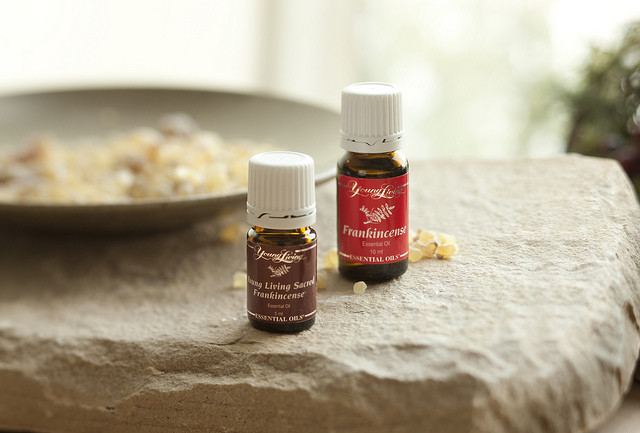
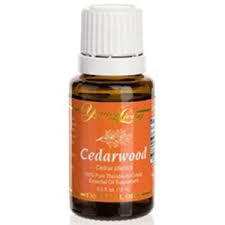
 Welcome to my Blog! I'm Suzie Webb you can read more about me
Welcome to my Blog! I'm Suzie Webb you can read more about me 
